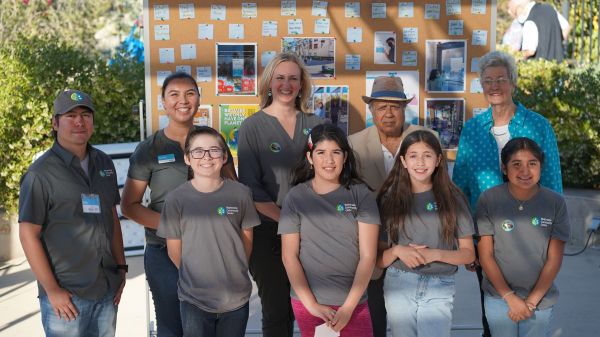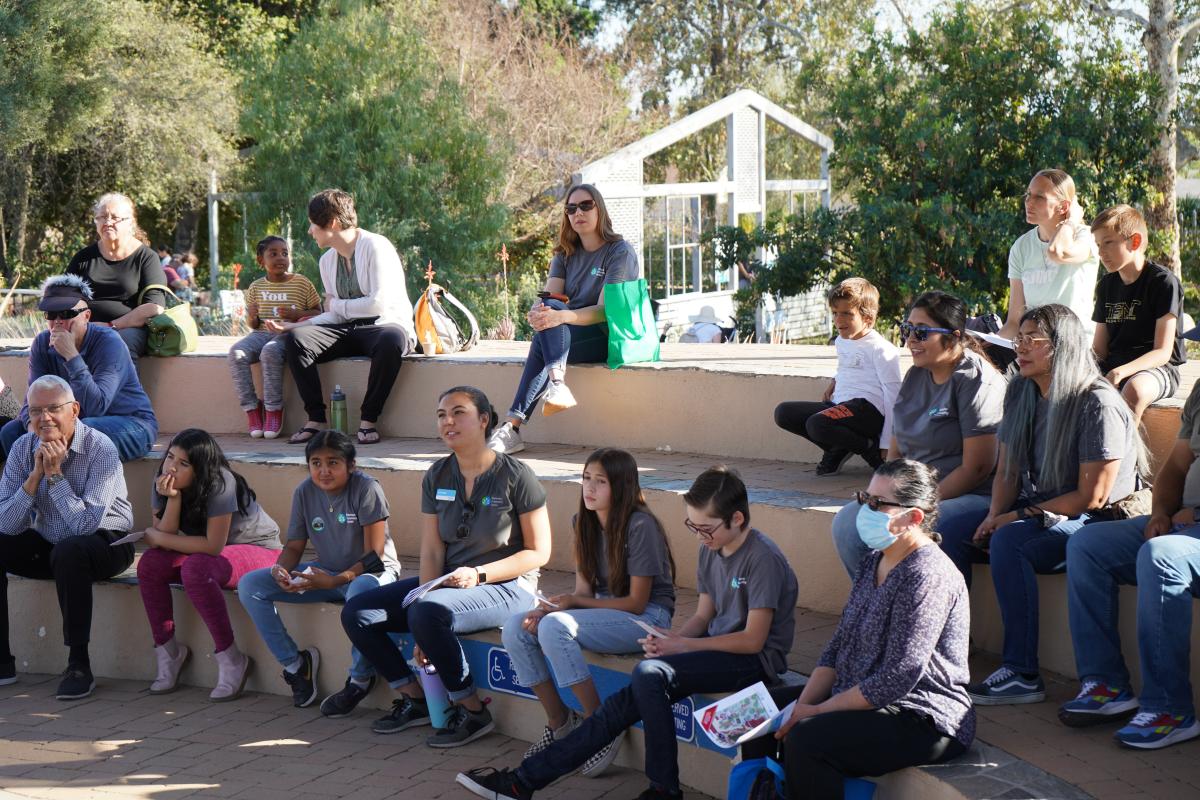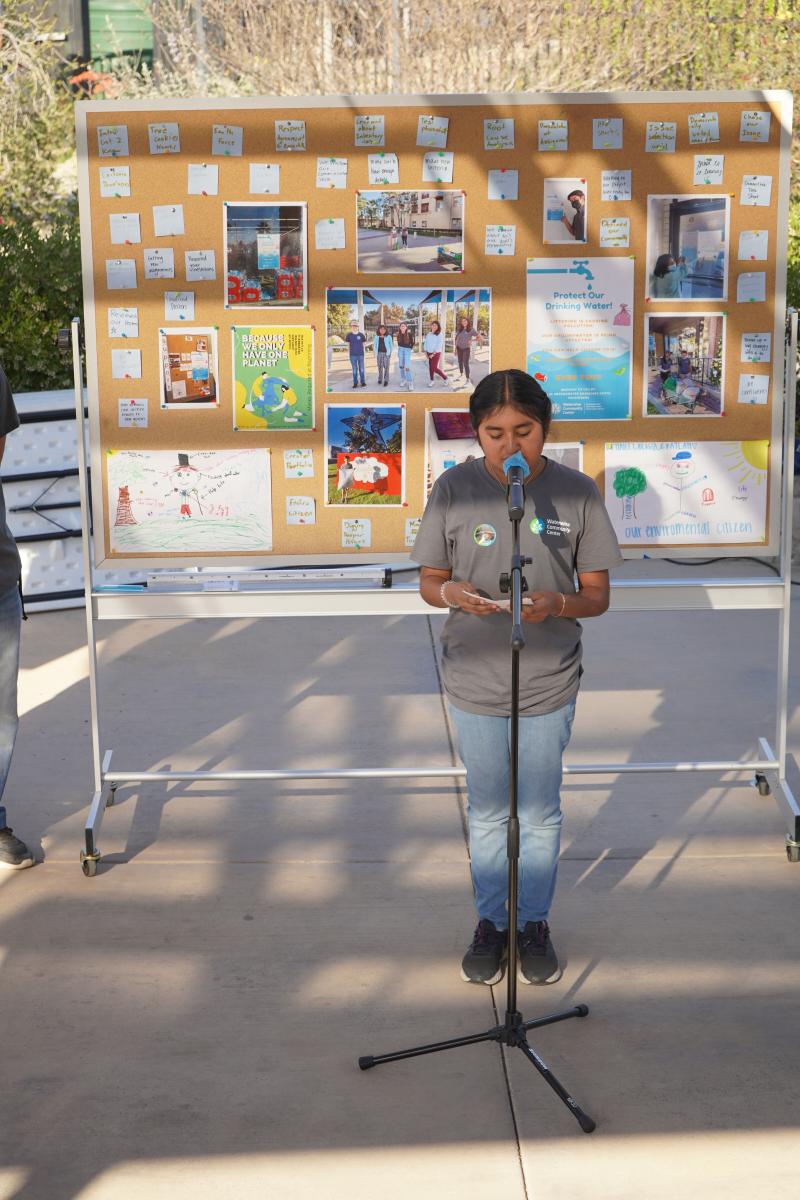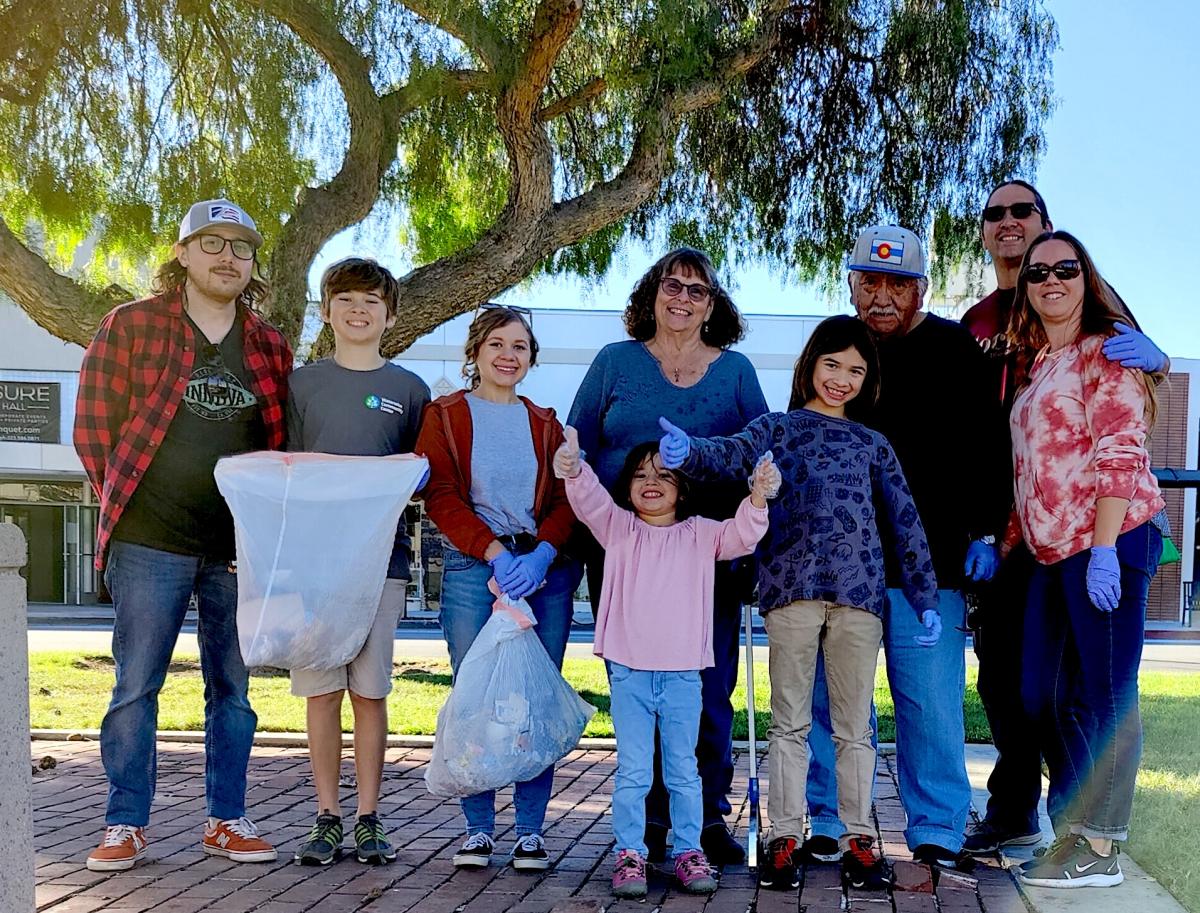Adapting Formal Education Curriculum to Fit a Nonformal Setting

Welcome to our blog series, CEE-Change, Together. Each month, NAAEE will post narratives from the CEE-Change Fellows as they implement their community action projects and work to strengthen environmental education and civic engagement capabilities, all supporting the mission of cleaner air, land, and water. Join us on their journey! The Civics and Environmental Education (CEE) Change Fellowship is NAAEE’s newest initiative to support leadership and innovation in civics and environmental education in North America. This ee360 program is a partnership between NAAEE, US EPA, and the Cedar Tree Foundation.
As a CEE-Change Fellow and Program Educator at Chino Basin Water Conservation District, Jenna Hoover stays busy. But given the opportunity to talk about the work she and her colleagues have accomplished in engaging students in learning and sharing about groundwater protection, she is eager to take a moment to tell of her experience. In this video, Jenna talks about what she's learned from her CEE-Change Fellowship project and how she adapted a curriculum designed for formal educators to fit the needs of their nonformal setting.
Listen to Jenna's story or read the transcript below:
Transcript:
My name is Jenna Hoover, I am a CEE-Change Fellow. I work as a program educator at Chino Basin Water Conservation District in Montclair California in Tongva-Kizh land. My project was bringing together a group of six 6–12 grade students as our Groundwater Guardians youth volunteer cohort, where the students developed and led projects related to groundwater in our community and how they could make a change.
Question: What has been your favorite part of the experience?
Being able to have these meaningful experiences for youth to both see themselves as changemakers now, as well as to set them up with skills and experiences that will support them in the future, has been a major highlight for me.
Q: Tell us something important you’ve learned from your work.
[We had] a vision of "let’s use this Earth Force process." Earth Force is a great model and structure and provides lots of great resources for both formal and nonformal educators to facilitate youth-led civic and community action. That felt like it would be a really good resource for us as we did more long-term youth engagement for the first time here. And along the way, we had to realize, my colleague and I who co-ran this program, that we have to do a lot of adapting and figuring out how this program that was generally designed for formal educators and teachers in the classroom, how does it work for us at a water conservation district where we’re seeing these students once a week for an hour and a half, rather than every day in a classroom?
We got to adapt it and to definitely make some changes as we went, with how we structured this program. We even realized that some of this feels a bit tough. We’re asking students to do “homework,” but we don’t want it to feel too much like school.
I even got a chance to talk to Dr. Martha Monroe who's been doing work around Earth Force. She’s actually in the process of developing an Earth Force adaption for nonformal education settings, like 4-H, in her specific context. It feels like there’s a lot of thinking and adapting and work being done. We’re in the progress of a whole network of environmental educators thinking about that.
Something we’re still trying to figure out now is what does it look like for us as a water conservation district, with less time with students than a formal education setting, to be doing really meaningful work with students. That’s even affected how we’re going forward with this program.
We’re going to be starting another cohort in this coming school year. We decided to pivot from having students work on projects to having them focus more on outreach and how they can be communicating to fellow community members and support us at community events where we’re tabling and presenting at. We can see that with this changed focus, based on some of our organization's needs as well as what we feel like we have capacity for this school year—Does that affect the outcomes for the students and their learning experiences? And so, it's all a work in process, but it’s been really helpful having a lot of tools like Earth Force as well as connections like Dr. Monroe as well as the Fellowship as a whole to be figuring this out together.
Q: How is the nature of your work as nonformal educators different than the work of educators in formal institutional (i.e. higher ed, preK–12) settings?

For us as a nonformal setting, we took a resource designed for formal educators, for teachers in the classroom. We looked at what we had available in a nonformal setting and said we have 6 training sessions that are an hour and a half each with our students and a couple of meetings throughout the school year to check in and support students on their projects. But we’re definitely not seeing them as much as a classroom teacher would.
We had to figure out what is really important and helpful for us from the Earth Force resources in our circumstances. And also recognizing what do we have as a nonformal setting that maybe classroom teachers don’t have where we don’t have to have students work on fundraising because we had a lot of supplies, and even some funding in-house available for the students. Or we were able to provide a scholarship for each student who completed the program through some of the funding we have as an agency, rather than having students feeling like I need to do this because I’m in a class and this is an assignment. Our students self-selected in and also had incentive to finish the program and to do a good job. We're definitely seeing there are some challenges in being a nonformal setting and using this specific curriculum, where there’s a lot of work being done to adapt that now, but also recognizing that there are a lot of advantages we have, too, in being a nonformal setting, both in terms of resources and even more connections.

We got to bring in some of our colleagues, our facilities and operations manager, as well as our community programs educator colleague whose been really involved in our community. And they got to be the experts for our students to talk to. And that was a lot easier for us than maybe a teacher having to cold call professionals in the community to come in.
All that to say is there are definitely both pros and cons in nonformal education and formal education, but I think there’s a lot of opportunity for both with this type of work."
Learn more about Jenna's Groundwater Guardians and the efforts of the Chino Basin Water Conservation District.
Comments
In reply to 241 by Rebecca Franzen
Aww thanks Danny!! And I believe the same is very true for your students as well :)
You're doing such cool work, Jenna! I am sure the students are going to remember this opportunity to develop their leadership for years to come!